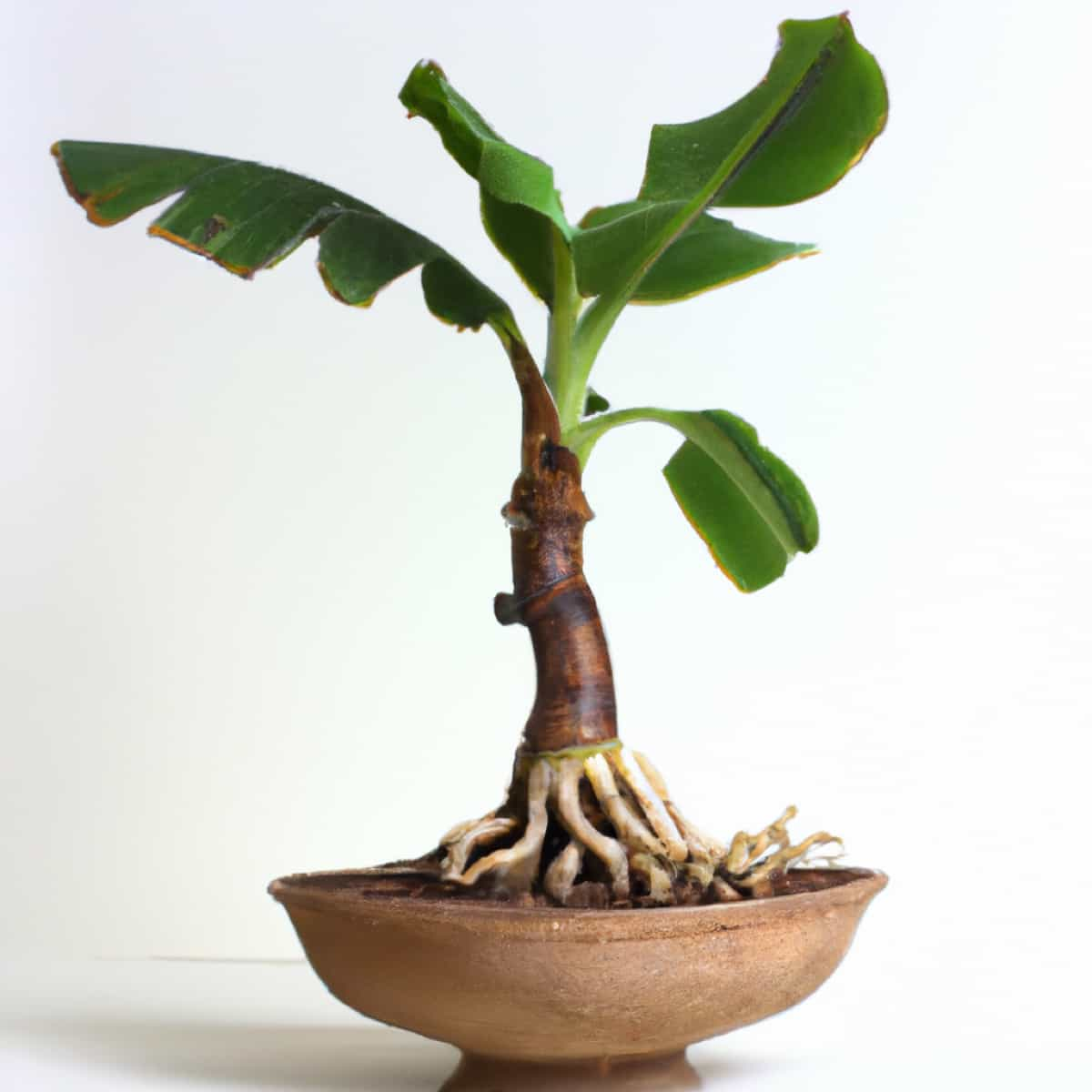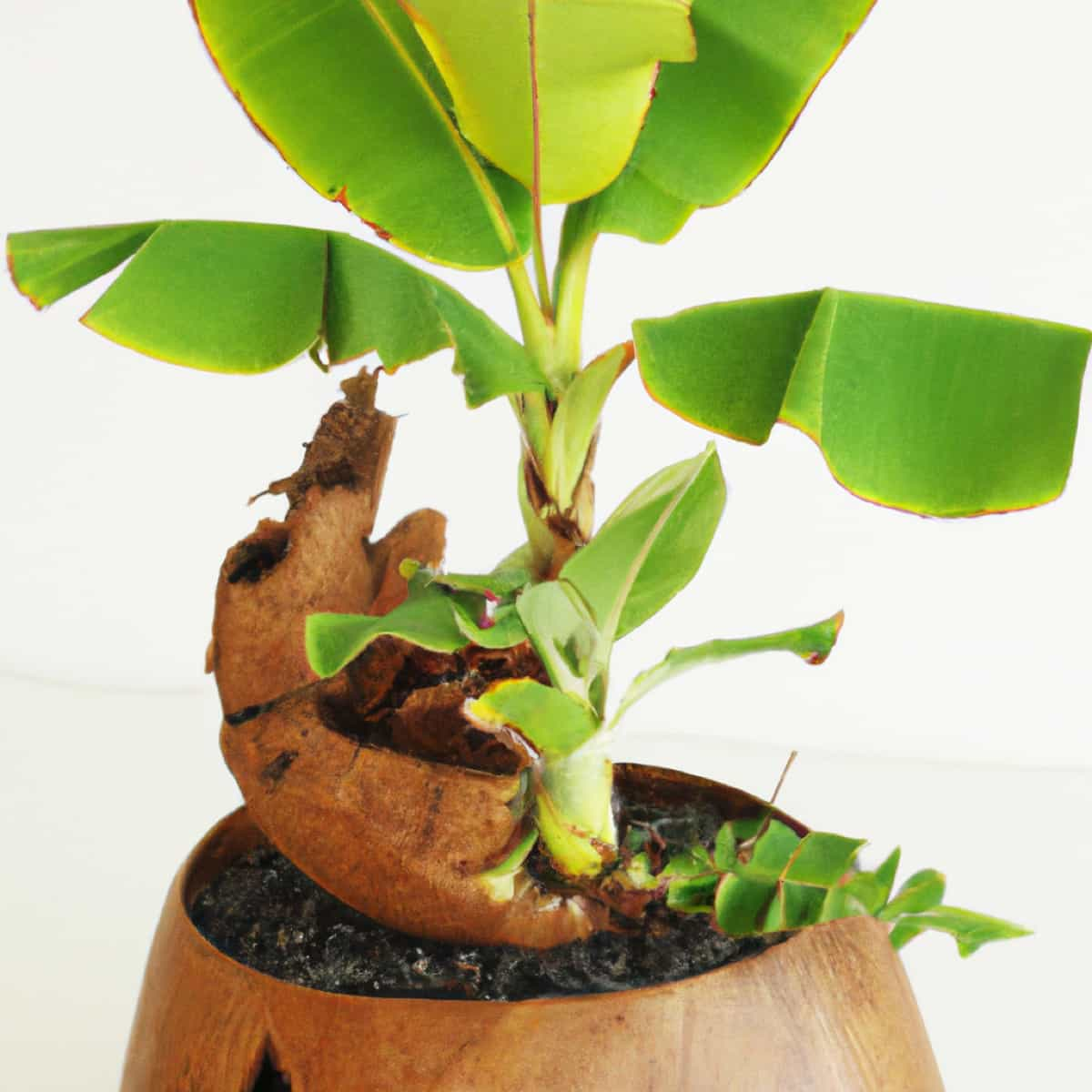Bonsai artistry has enthralled garden enthusiasts for centuries, originating in Japan and spreading its influence globally. One particular species that has intrigued horticulturalists recently is the Bonsai Banana Tree. Cultivating this tree requires diligence, patience, and a deep understanding of its necessities. A unique blend of traditional bonsai techniques and specific care tailored to this unique variety makes growing a Bonsai Banana Tree a rewarding experience.

How to Grow and Care for Banana Bonsai
How to Plant Bonsai Banana Trees Indoors
Planting a Bonsai Banana Tree indoors is the first step towards creating a captivating miniature tropical environment. Given that this variety prefers warm climates, indoor cultivation shields it from potentially damaging cold weather. To begin planting, select a shallow bonsai pot that is approximately two-thirds the height of your banana tree. Clean the pot thoroughly to eliminate traces of previous plants or fungi that may harm your tree.
Prepare a suitable soil mix, which will be discussed in depth later in this article. Place some of the soil in the pot and make a small mound in the center. Carefully place the banana tree atop this mound, ensuring the root flare is slightly above the soil level. Gently spread the roots over the mound before adding more soil, ensuring that it covers the roots entirely. After planting, water the bonsai thoroughly and place it in a location that receives plenty of light but is safe from strong drafts.
Step-by-step Guide to Growing Bonsai Banana From Seeds
Growing a Bonsai Banana Tree from seed might be challenging, but it is an exciting process. Begin by sourcing high-quality seeds from a reputable garden center or nursery. Immerse the seeds in lukewarm water for a duration of 24 hours to initiate the process of germination. Afterward, prepare a petite container with bonsai soil blend, sow the seeds, and delicately conceal them beneath a fine soil coating. Adequately water the container and position it in a warm environment.
Ensure the soil remains moist but not waterlogged, as this can lead to seed rot. Within a few weeks, seedlings should appear. After the emergence of genuine leaves, the plants are prepared for transplantation into bigger containers to facilitate further development. The key to this process is patience; growing a Bonsai Banana Tree from seeds can take time, but the result is undoubtedly worth the wait.
Essential Care Tips for Bonsai Banana Plants
Caring for a Bonsai Banana Plant involves consistent attention to its needs, including proper watering, sunlight exposure, and fertilizing. Establishing a routine watering schedule, which will be discussed later, is crucial for healthy growth. Providing the right amount of sunlight is equally important, which brings us to our next topic: sunlight requirements.
The Bonsai Banana Tree thrives in bright but indirect sunlight. Direct sunlight might scorch the leaves, so ensure it is in a space with filtered light. Regular fertilizing is also necessary to replace nutrients that get washed out of the soil. Use a balanced, water-soluble fertilizer and follow the package instructions for application rates.
Best Soil Mix for Bonsai Banana Trees
The best soil mix for a Bonsai Banana Tree drains well but retains enough moisture to support the tree’s hydration needs. A desirable mixture comprises equal proportions of loam, peat moss, and either coarse sand or perlite. Loam offers structure and nutrient content, peat moss improves water retention, and coarse sand or perlite ensures good drainage. Avoiding garden soil as it can compact in the pot, leading to poor aeration and drainage.
Pruning Techniques for Maintaining Bonsai Banana Shape
Maintaining the shape of a Bonsai Banana Tree involves careful pruning. Regular pruning encourages denser growth and helps maintain the bonsai’s size and form. Use a sharp, clean pair of bonsai scissors to remove unwanted growth. Remember, not over-prune is crucial, as this can stress the tree. Always leave some foliage on the tree to ensure it can still photosynthesize and grow.
In case you missed it: How to Grow and Care for Guava Bonsai: Planting Instructions

Watering Schedule for Healthy Bonsai Banana Growth
Creating an appropriate watering schedule is vital for the health of a Bonsai Banana Tree. Bonsai Banana Trees prefer moist but not waterlogged soil. Water your bonsai when the top inch of the soil feels dry. Avoid watering on a strict schedule; instead, monitor the soil moisture levels regularly and water accordingly.
Sunlight Requirements for Bonsai Banana Trees
Bonsai Banana Trees prefer light, but indirect sunlight is best to avoid leaf scorching. Ideally, place your Bonsai Banana Tree near a window where it will receive bright but filtered light. If necessary, you can supplement it with artificial light. An indoor grow light can provide the necessary light spectrum for the tree’s growth, especially during winter when natural light levels are lower.
Common Pests and Diseases Affecting Bonsai Banana Plants
Even with optimal care, Bonsai Banana Trees can occasionally prey on pests and diseases. Common pests include spider mites, aphids, and scale. Regular inspection of your bonsai can help catch these infestations early. Mild insecticidal soap or neem oil can treat most of these pests.
Fungal diseases can also affect Bonsai Banana Trees, often characterized by discolored, spotted, or wilting leaves. A fungicide can usually manage these diseases, but proper watering and air circulation prevention is the best approach.
Winter Care for Bonsai Banana Trees
Winter care for Bonsai Banana Trees involves protecting them from low temperatures and decreased light levels. As tropical plants, they don’t tolerate cold well. Keep them indoors in a warm, well-lit area during winter. A drop in temperature can damage or even kill your bonsai, so ensure it is far from cold drafts or unheated rooms.
Repotting Bonsai Banana: When and How to Do It
Repotting a Bonsai Banana Tree is crucial for its health and growth. Over time, the tree’s roots can fill the pot, limiting its access to necessary nutrients. Generally, a bonsai should be repotted every two to three years. To repot, carefully remove the tree from its current pot and gently brush away the old soil from the roots.
Trim back any overly long or thick roots to keep the root system in check. Then, place some fresh soil mix in the new pot, position the tree, and fill in with additional soil. Ensure the tree is planted at the same depth as in the previous pot. After repotting, thoroughly water the bonsai in a shaded area for a few weeks to help it adjust.
In case you missed it: How to Grow and Care for Bonsai Grapes: Planting Instructions

Conclusion
Growing a Bonsai Banana Tree is an exciting and rewarding endeavor. With patience, consistent care, and a bit of luck, you’ll soon have a tropical oasis in your living room.
- Ultimate Guide to Ossabaw Island Hog: Breeding, Raising, Diet, and Care
- Ultimate Guide to Juliana Pig: Raising Facts, Size, Diet, Care, and Lifespan
- Raising Lleyn Sheep: Disadvantages, Price, Uses, Characteristics, and Care
- Ultimate Guide to Meishan Pig: Breed Facts, Breeding, Raising, and Care
- Ultimate Guide to Teacup Pigs: Raising, Diet, Lifespan, Cost, and Care
- Guide to Raising Poll Dorset Sheep: Facts, Profile, Characteristics, Uses, and Care
- Ultimate Guide to Bighorn Sheep: Characteristics, Diet, Lifespan, Breeding, and Lifecycle
- Ultimate Guide to Raising Katahdin Sheep: Farming Facts, Breed Profile, Uses, and Care
- Ultimate Guide to Raising Oreo Cows: Belted Galloways Farming Facts, Profile, Uses, and Care